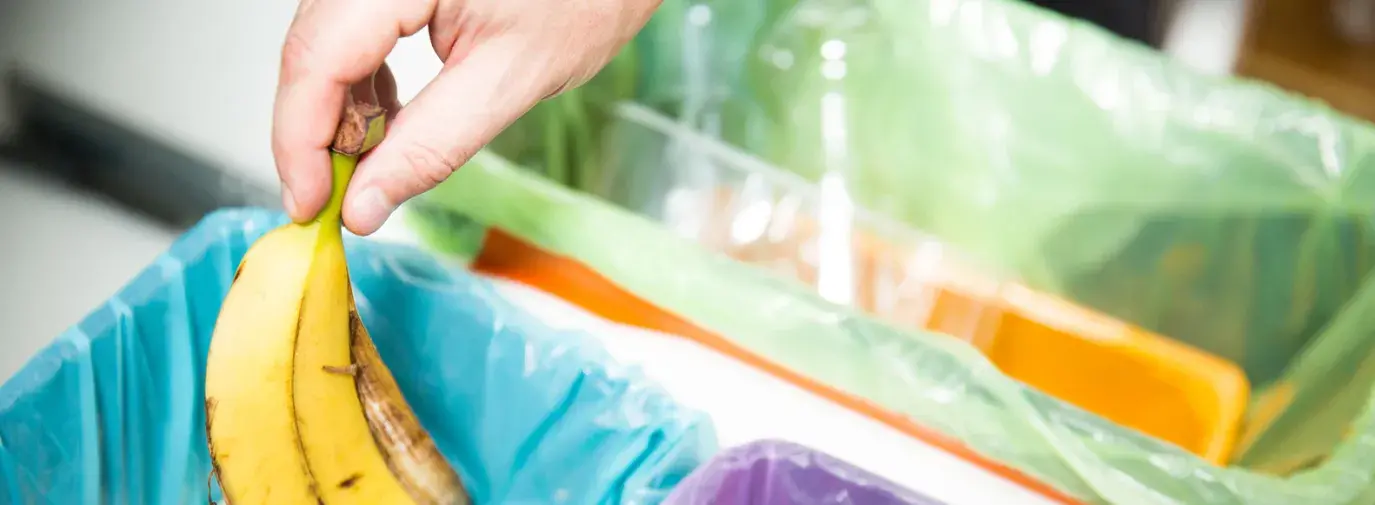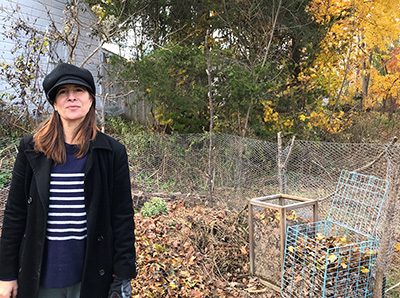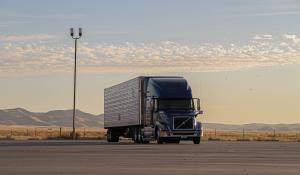
Composting is no longer just a way to reduce the amount of organic waste headed for the landfill—although that’s a great benefit. Farmers and gardeners who use regenerative agricultural practices know that composting is key to building healthy soil, as it provides food to soil microorganisms that improve plant health and sequester carbon. The world needs more composters to keep our soils healthy—which is critical if we want to feed the world and cool the planet.
In fact, a worldwide switch to regenerative agriculture, including robust composting, could actually reverse the climate crisis, according to the scientists and other experts participating in the Carbon Farming Network of Green America’s Center for Sustainability Solutions.
While the idea of composting for the climate might appeal, perhaps you’ve yet to give it a try. Or, if you do compost, maybe you have a friend or family member who isn’t following your stellar example.
To help you or your neighbors overcome your organic-waste fears, here are Green America’s best suggestions for overcoming common barriers to composting.
“I’m interested in a compost bin, but there are so many to choose from!”
It’s true: there’s a wide variety of compost bins out there. Green America has an article called “Pick a Composter, Any Composter” on our website that details some of the most popular options in detail, but here’s the quick version:
- Holding bins: You can build or buy a low-maintenance, open-top wooden or plastic bin, or build your own. It’ll keep your compost pile out of sight, and the open top allows you easy access to turn your compost.
- Tumbling barrel composters: Smaller than the open-air versions, these bins are basically barrels that rotate easily with the turn of a hand-crank, nicely aerating smaller batches of organic waste. You’ll need to pay extra attention to getting the mix of brown and green waste balanced to achieve fast results, or you may end up with a bit of a backup.
- Multi-tiered composters: These composters are basically a series of shallow bins stacked on top of each other. As your organic waste decomposes, it falls into successively lower bins until it comes out of the bottom as finished compost. The smaller bins help the compost cook faster than a big pile or bin, but their stacked nature means they can hold as much waste as a large bin.
“Can I compost without a bin?”
Yes! Many people just find an out-of-the-way area in their yard and start piling their organic waste there. In fact, my family has a small patch of woods in our back yard, so we just take our organic waste to a spot hidden in the trees, and we rotate it with a shovel occasionally.
Keep a roughly 50/50 mix of green waste (think fruit and veggie peels) to brown waste (think leaves, grass clippings, and coffee grounds), and turn it occasionally to aerate it, as organic waste needs oxygen to decompose aerobically and turn into compost. You’ll soon have a nice pile of nutrient-rich humus (i.e. soil filled with plenty of dark, naturally decaying organic matter) to use on your garden or your house plants.
Or, if you don’t have a garden and would rather keep things really simple, dump in a remote corner of your yard and let nature do its thing without you. Keep in mind that a compost pile with food scraps may attract rodents. We have woods behind our house, so we’re able to set our pile several feet away from our home. If you want to avoid rodents, an enclosed bin or a simple fence with chicken wire around your pile will help.

Priscilla Woolworth, a Climate Victory Gardener from upstate New York, put together a simple compost pile near her garden, which she enclosed inside a fence she made of chicken wire and branches. She says of her pile, “It’s working perfectly and slowly filling up with vegetable garden detritus and leaves. I hope that beneficial insects will enjoy it as well.”
“I have a bad back. Turning compost would be difficult for me.”
You have a few different options to make composting gentler on your spine and joints.
As noted above, a tumbling barrel composter lets you easily aerate small batches of compost with the turn of a hand-crank. Or, try a worm bin for the fastest results and smallest batches. (See below for more on the latter.)
Or, you can combine the simplicity of a pile with the ease of a tumbling barrel with a Compost Crank. Sold by Lotech Products, a family-owned green business in Tucson, AZ, the Compost Crank looks like a giant corkscrew. You just stick the Crank into your compost pile and turn it with the ergonomic handle, and your compost will be mixed and aerated without your ending up in bed for days. In fact, inventor Charlie Ambrose handcrafted his first Compost Crank when his own bad back made turning compost a challenge.
“I don’t have a yard.”
Sure, gardening stores often showcase spiffy composting bins or rotating barrels with plenty of bells and whistles, but you need a place to put a bin or barrel first. And that’s easier said than done if you live in an apartment or a place with a lack of outdoor green space.
Our solution: Try worm composting. Also known as vermicomposting, this type of composting is as simple as 1-2-3:
- Place a five- to ten-gallon wooden or plastic bin under your kitchen sink or in another place that’s warm and dark.
- Buy some red worms, also known as Eisenia foetida and Lumbricus rubellus. If you don’t have a local bait shop or worm farm, you can mail order them from businesses like Gardener’s Supply.
- Put the worms in the bin with some damp strips of newspaper to provide a nice, cushy (and edible) bed. Then, all you have to do is dump in your fruit and vegetable scraps, and the worms will turn them into rich compost.
- The 50/50 rule applies for worm bins, too, so make sure to resupply the newspaper (brown waste) as the worms eat through it and your produce peels (green waste). A proper balance will ensure that your bin doesn’t smell.
One big benefit: worms will process your organic waste quickly. Red wiggler worms will recycle half their weight in 24 hours.
For more information on worm composting, see our articleWorm Composting, All-Natural Recycling."
For an even easier option, a growing number of municipalities offer drop-off composting or may even pick it up curbside for processing at a municipal composter. Call your local waste authority to see if this service is available to you.
In addition, local businesses are popping up across the country that offer compost pick-up services, where they’ll collect your organic waste and turn it into compost products that they sell. Or local community gardeners or farmers may accept organic waste from you to turn into compost for their plants. Check your local business listings and ask around to see if you can find someone willing to take your organic waste.
“I live in a cold climate. Can I still compost in winter?”
Along with oxygen, your pile of brown and green organic waste will need heat to turn into compost fairly quickly. If you don’t have the heat, your compost won’t “cook.”
If you live in a snowy climate in winter, you can buy insulated composters that will keep your compost pile decomposing. It won’t cook as quickly in cold weather, but you’ll likely get some results.
If you have a compost pile out in the open, there’s no reason you can’t keep contributing organic waste to it in the winter. It may end up feeding animals versus turning into compost, but isn’t that better than sending that waste to a landfill? They’ll consume your scraps, eliminate some as waste, and that waste becomes natural fertilizer for the soil come spring. Mission accomplished.
“I’d like to compost fish, dairy, and meat. Is that possible?”
You can’t put fish, dairy, or meat into a traditional compost pile or bin without disrupting the composting process.
They’ll will attract flies and maggots, and cause your compost to smell.
Note that unlike home bins, municipal composters are designed to break down meat, fish, and dairy (in addition to things like compostable plastics that won’t decompose in your home bin), so don’t feel bad about sending those curbside if your city has compost pick-up and says they’re okay.
You can compost meat, fish, and dairy anaerobically; the Bokashi One-Bucket method of composting works in this manner. Bokashi (meaning “fermented organic matter” in Japanese) composting requires a plastic bucket with a spigot at the bottom. You put your organic waste, including meat and dairy, and a fermenting powder (usually a mix of bran and anaerobic bacteria) in, and the waste ferments. You’ll end up with liquid and a smaller amount of organic waste that you can then bury in the soil.
However, there’s a downside: Well- aerated organic waste decomposes aerobically, meaning that microorganisms that need oxygen to survive assist in the decomposition process. Without oxygen, your pile will decompose anaerobically, meaning bacteria that don’t need oxygen help it decompose. Unfortunately, anaerobic bacteria release methane, a potent greenhouse gas, as they work.
Your best bet for the climate? Compost aerobically with a pile, bin, or a worm bin, and take steps to reduce food waste overall, especially when it comes to foods like meat, fish, and dairy that can’t be composted at home.







